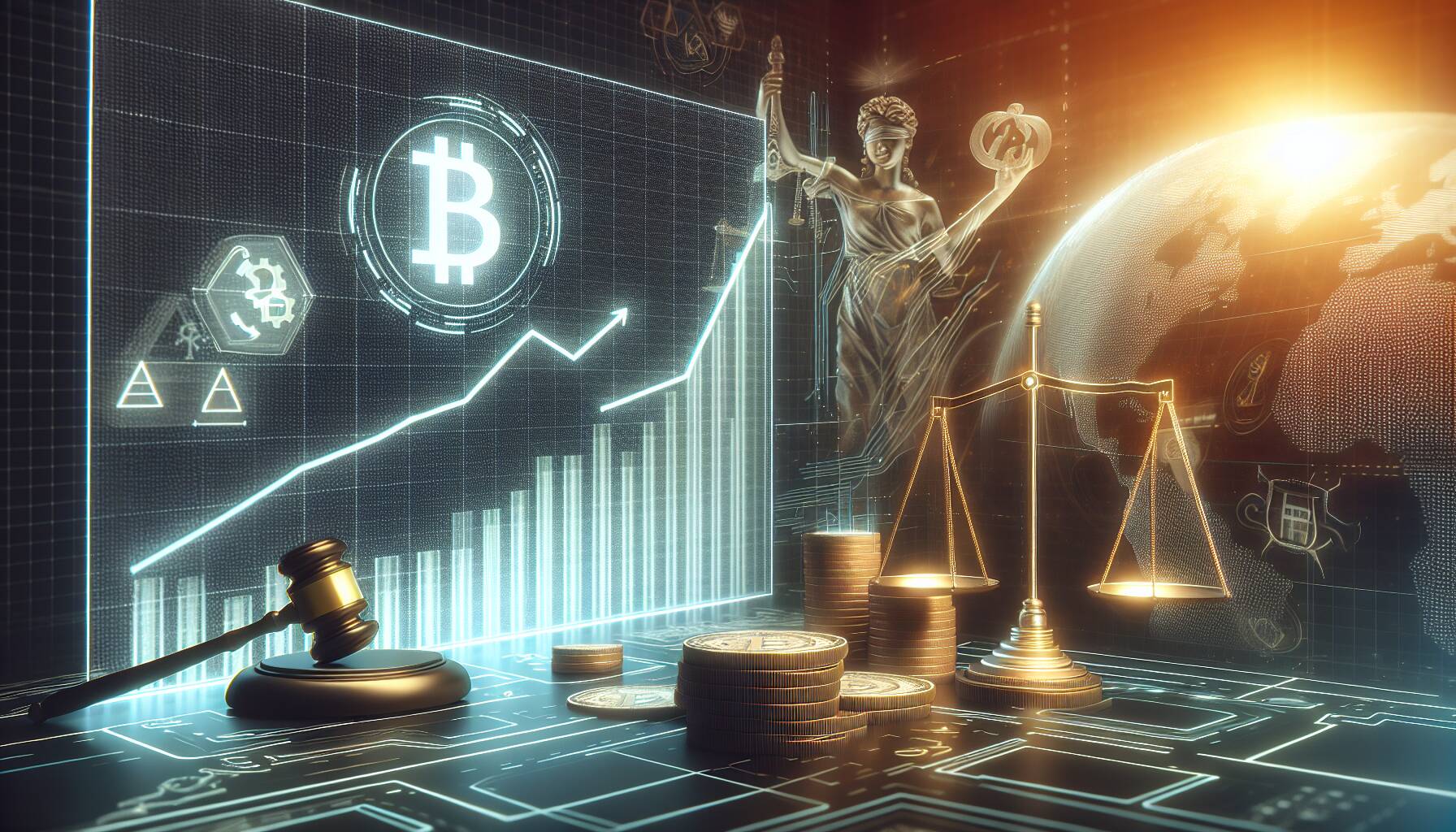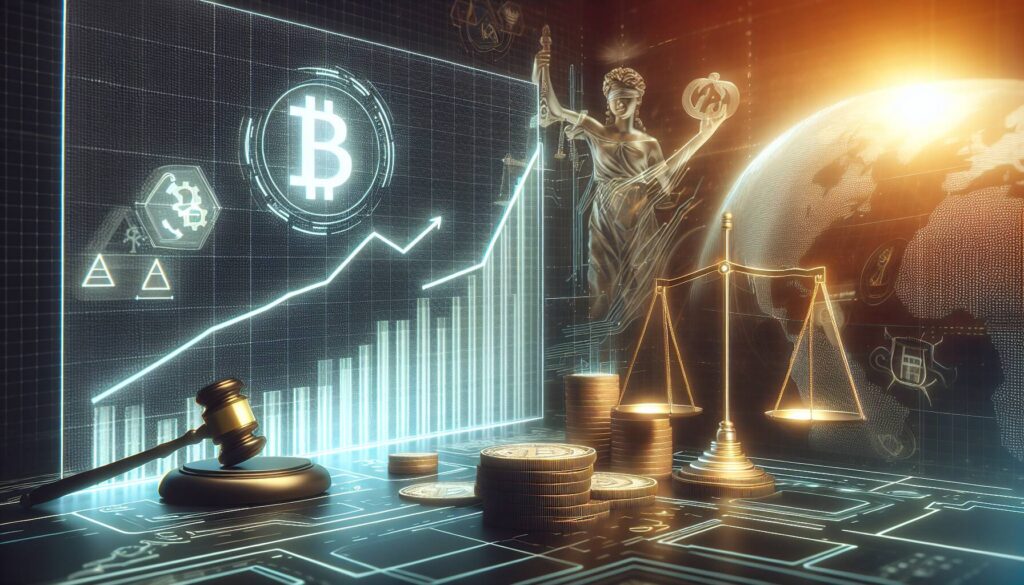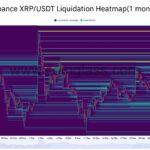In a striking development within the cryptocurrency landscape, Garantex, a Russian crypto exchange notorious for its connections to ransomware gangs and sanctions-evasion, appears to have swiftly re-emerged as Grinex, just weeks after an international crackdown by law enforcement. This transformation raises critical questions about the resilience of illicit financial networks and the ongoing challenges of enforcing sanctions within the crypto space.
According to a recent analysis from Global Ledger, a Swiss blockchain analytics firm, a wealth of evidence indicates that Grinex is likely a direct successor of Garantex. This includes off-chain and on-chain activity, with significant liquidity from Garantex reportedly transferred to Grinex wallets. The rapid rise of Grinex, surpassing million in trading volume within just two weeks, has also flagged attention, alongside social media connections to Garantex that add to the suspicion.
“Sanctions evasion is going to happen,” said Andrew Fierman, Head of National Security Intelligence at Chainalysis, highlighting the challenges enforcement agencies face in tracking the evolving methods employed by sanctioned entities.
As law enforcement continues to investigate the potential links between Grinex and Garantex, parallels are drawn to past incidents where sanctioned exchanges successfully rebranded, only to encounter new legal troubles. The history of exchanges such as BTC-E, which became WEX after its shutdown, underscores a recurring theme in the crypto world: the hydra-like ability of these platforms to reinvent themselves post-crackdown.
With the swift revival of Garantex and the emergence of Grinex, the cryptocurrency industry’s ongoing struggle with compliance and regulation becomes increasingly apparent. The complexities brought forth by blockchain technology provide unique opportunities for monitoring and tracking illicit financial flows, yet they also highlight the continuous cat-and-mouse game between law enforcement and the operators of non-compliant exchanges.
As Ari Redbord from TRM Labs notes, “it is clear that other high-risk non-compliant exchanges will try to fill the illicit finance void left by Garantex,” illustrating the abundance of potential successors lurking in the shadows.
The Garantex case serves as a stark reminder of the extensive global network of crypto exchanges operating in the gray areas of legality, and the persistent efforts required to confront the challenges posed by these illicit operations.

Garantex’s Revival as Grinex: Implications and Insights
The recent emergence of Grinex, rebranded from the notorious Garantex, highlights significant challenges in regulating cryptocurrency exchanges, especially those linked to criminal activities. Here are the key points for readers to consider:
- Rebranding of Garantex: Grinex is reportedly a direct successor to Garantex, which was shut down by international law enforcement for its involvement in facilitating money laundering and aiding ransomware gangs.
- Evidence of Connection: Global Ledger’s findings suggest strong on-chain and off-chain links between Garantex and Grinex, such as the movement of assets and similar user interfaces.
- Rapid Growth: Grinex has quickly amassed over million in trading volume within just two weeks, indicating a swift recovery and user migration from Garantex.
- Challenges of Sanctions: The quick resurgence of cryptocurrency exchanges after sanctions illustrates the difficulty in enforcing financial regulations against sophisticated actors who can easily evade detection.
- History of Rebrands: Other exchanges, like BTC-E and Suex, have previously rebranded to avoid sanctions, highlighting a pattern that could repeat with Grinex unless effectively monitored.
- Potential Monitoring Opportunities: Despite the challenges, the transparent nature of blockchain technology provides law enforcement with tools to track illicit activity and funds post-sanction.
- Future of Non-compliant Exchanges: Experts suggest that the space left by Garantex’s shutdown will likely be filled by other non-compliant exchanges eager to accommodate illicit financial activities.
- Ongoing Investigations: Authorities, such as Chainalysis, are conducting reviews to confirm the transitory nature of Grinex as the next incarnation of Garantex, which could have significant implications for future regulatory actions.
“Sanctions evasion is going to happen… and the larger the operation, the more technically advanced you’d have to be to actually make it work.” – Andrew Fierman, Chainalysis
Understanding these points can help readers grasp the evolving landscape of cryptocurrency exchanges and the potential risks associated with engaging in trading on platforms like Grinex. The persistence of such exchanges raises concerns about financial security and regulatory efficacy that impact both individual investors and the broader financial ecosystem.
The Resurgence of Grinex: Analyzing the Revival of a Controversial Crypto Exchange
The recent transformation of Garantex into Grinex is stirring up conversations across the crypto landscape. As law enforcement succeeded in dismantling Garantex, an exchange notorious for its connections to ransomware gangs and sanctioned individuals, the unveiling of Grinex not only highlights the resilience of illicit operations but also raises critical questions about regulatory effectiveness in the blockchain space. This situation presents a dual-edged sword for both the crypto community and regulatory bodies.
Competitive Advantages: Grinex’s rapid ascent, boasting over million in trading volume within just two weeks, showcases its ability to quickly attract users despite its controversial heritage. The exchange appears to leverage the same infrastructure and user-friendly interface that characterized Garantex, allowing it to plead continuity while reframing its narrative. This familiarity could easily lure back former users, especially with user experiences significantly impacting retention in the highly competitive crypto market. Moreover, the opacity introduced by a rebrand complicates investigative efforts, enabling the exchange to sidestep initial scrutiny as it skirts around the harsh penalties imposed on its predecessor.
Competitive Disadvantages: Yet, the rapid pivot has its risks. For Grinex, the ominous shadow of Garantex’s reputation could deter potential users wary of regulatory backlash. Already under the microscope from analysts like Global Ledger and Chainalysis, Grinex faces the challenge of establishing trust in an environment where compliance is paramount. Furthermore, its foundations may be shaky; historical precedents like BTC-E and Suex suggest that exchanges that rise from the ashes of sanctions often encounter swift retribution from authorities, leading to eventual collapse due to internal strife or law enforcement action. The inherent vulnerabilities in the crypto sector could leave Grinex exposed, especially as more vigilant scrutiny is applied in the wake of public announcements.
Beneficiaries and Those Challenged: This transformation could particularly benefit tech-savvy criminals looking to exploit a gap in the market for rapid transactions without intrusive oversight. Conversely, this situation complicates matters for law enforcement agencies, which may find it increasingly difficult to track illicit transactions flowing through evolving exchange platforms. The challenges highlighted by this scenario suggest a larger systemic issue within the cryptocurrency framework, encouraging policymakers and regulatory bodies to adopt more robust and flexible approaches. If they fail to adapt, an unregulated surge in such platforms could undermine legitimate market operations and further entrench criminal behavior within the digital currency realm.

















